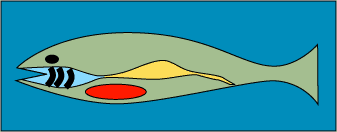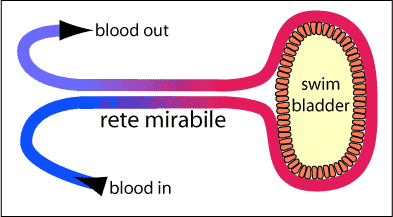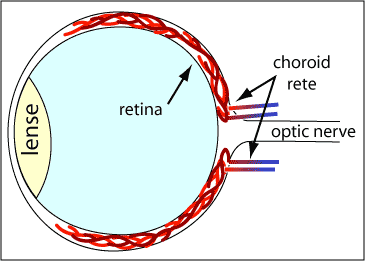| The gas that fills the bladder is oxygen, carried by hemoglobin in the blood of the fish. In all animals most of the oxygen in blood is bound to the protein hemoglobin, which is inside the red blood cells. A unique property of the hemoglobin in fish with swim bladders enables the fish to fill or empty its swim bladder.
When the blood surrounding the bladder becomes slightly acidic the hemoglobin releases oxygen into the bladder. If the blood becomes less acidic the oxygen is reads orbed by hemoglobin. The response of hemoglobin to acidity can be summarized by oxygen binding curves. A binding curve shows how the amount of oxygen bound to hemoglobin increases with an increase in the free oxygen concentration. The black curve on the right shows the binding of oxygen to hemoglobin under normal conditions.
The hemoglobin of fish with bladders is extremely sensitive to acidic conditions, releasing about half of bound oxygen even at high oxygen concentrations. This property is called the Root effect, after the scientist that characterized it. As seen by the blue curve to the right, approximately half of the oxygen is released, even if the free oxygen concentration is very high.
The hemoglobin of most animals, including humans, is sensitive to acidic conditions, but to a much reduced degree. The red curve represents this effect, which is called the Bohr effect.
|
|
|




